
During the late 1800s, the banks of the Arroyo Seco and surrounding area is primarily an agricultural community of fruit growers.
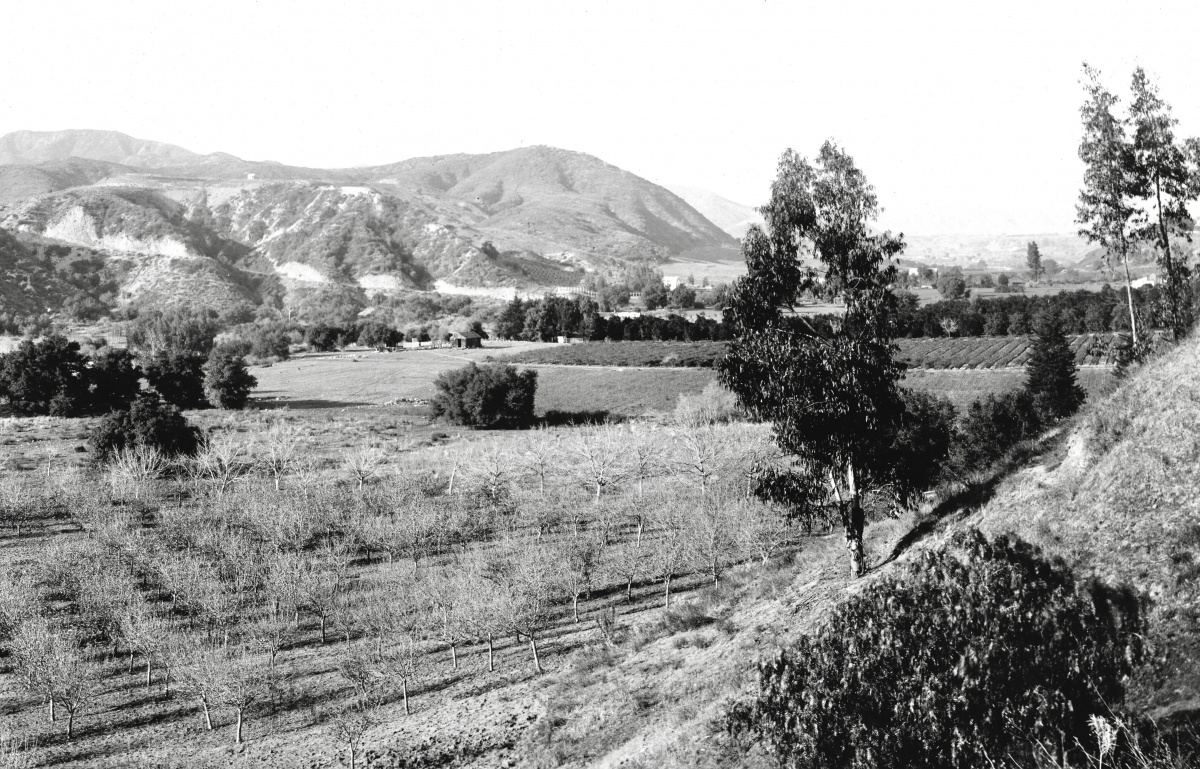
In the above photo, the road cut in the background descends into the arroyo at the future site of the Colorado Street Bridge.
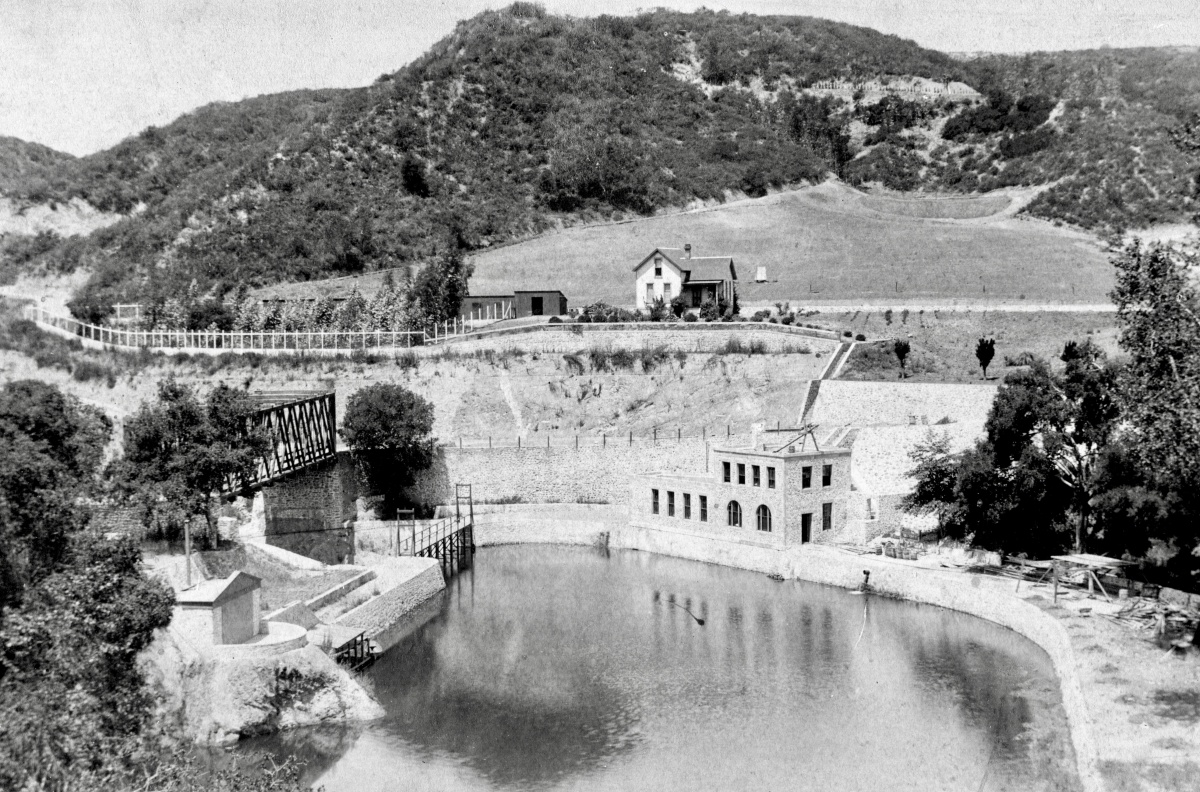
The Scoville family built the first major dam in the Arroyo Seco to provide irrigation for the orange groves of San Rafael and surrounding fruit orchards. This same land would become the site of the Colorado Street Bridge in 1913 and Pioneer Bridge in 1953.
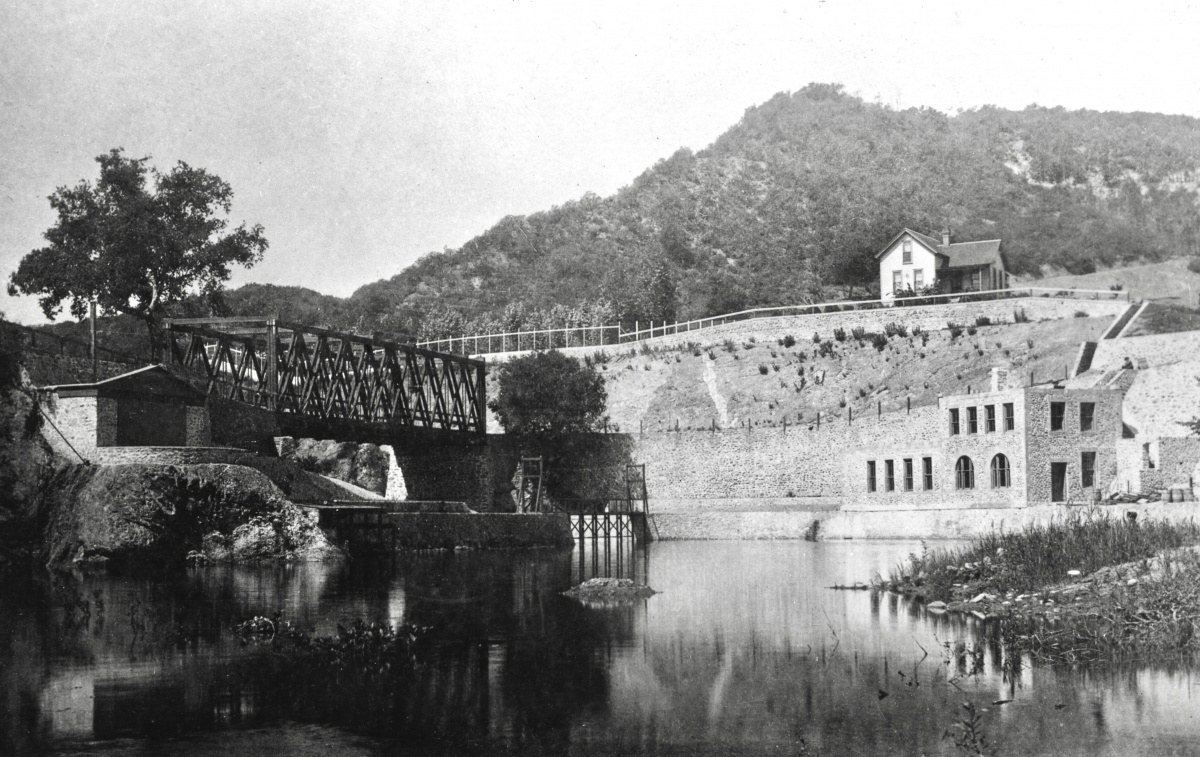
The Arroyo Seco crossing at Scoville’s Park became a vital transportation link for buggies, bicycles, and early motorist. The dam also helped to regulate the flow of the river during a rainstorm.

The handwritten note on the back of the above photo states, “Scoville’s was the original Colorado Street Bridge.”
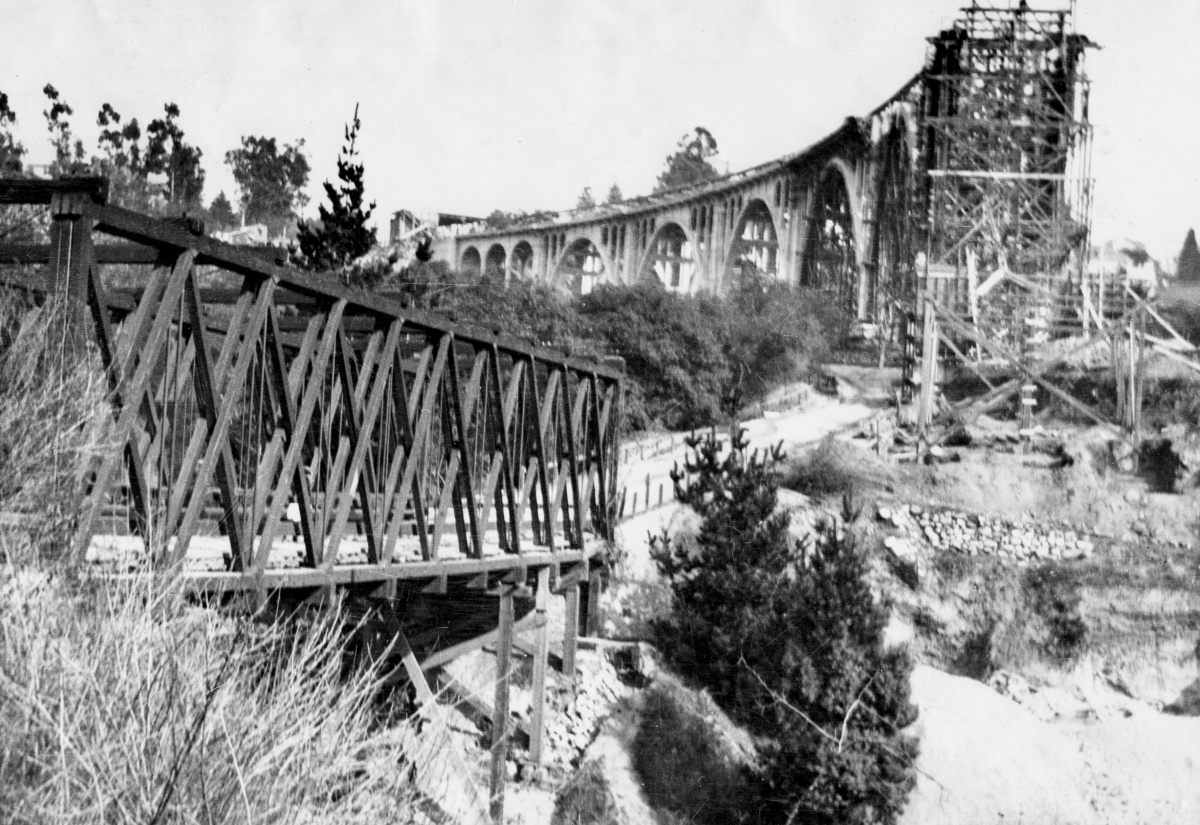
Of course, at the time the bridge was never referred to as the Colorado Street Bridge. Notice the new bridge construction in the above photo.
Future Site – Colorado Street Bridge (1905)
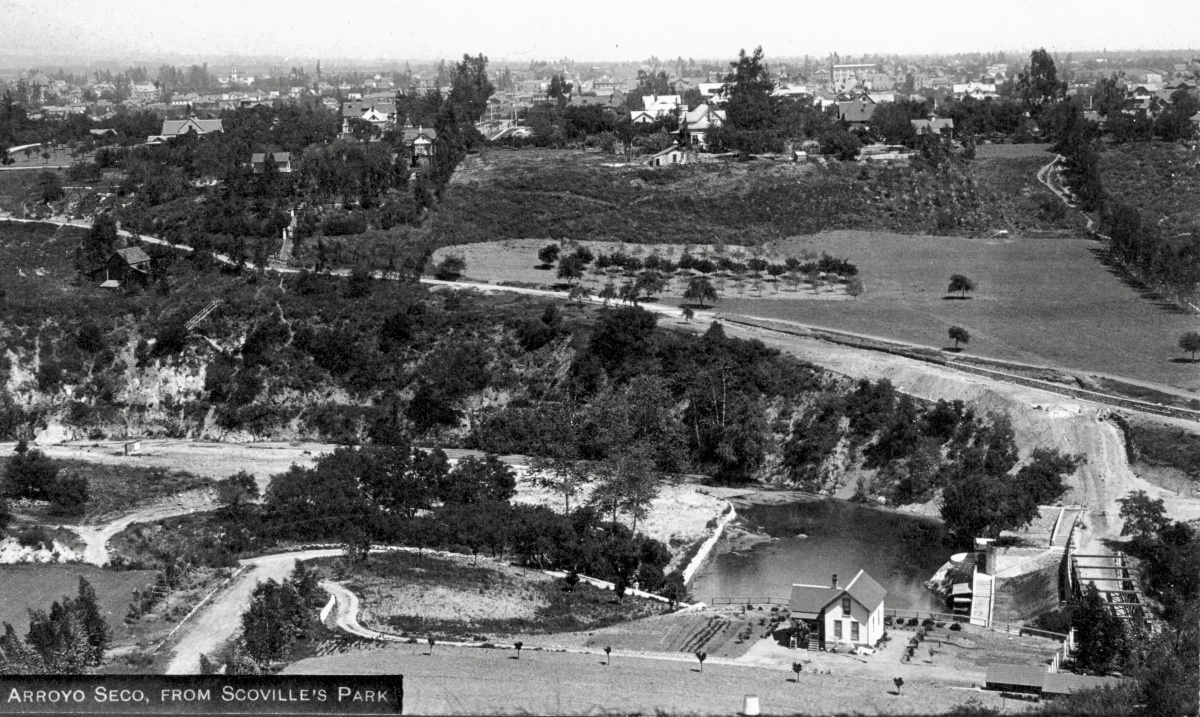
Construction of the Colorado Street Bridge began on the west side – from the place you are now looking at this picture. Notice the natural rise highlighted by the freshly-graded road. The bridge extends straight out over the arroyo, then curves to follow the bank allowing the engineers to provide a solid footing for the massive concrete structure.
Same View – Colorado Street Bridge (1913)
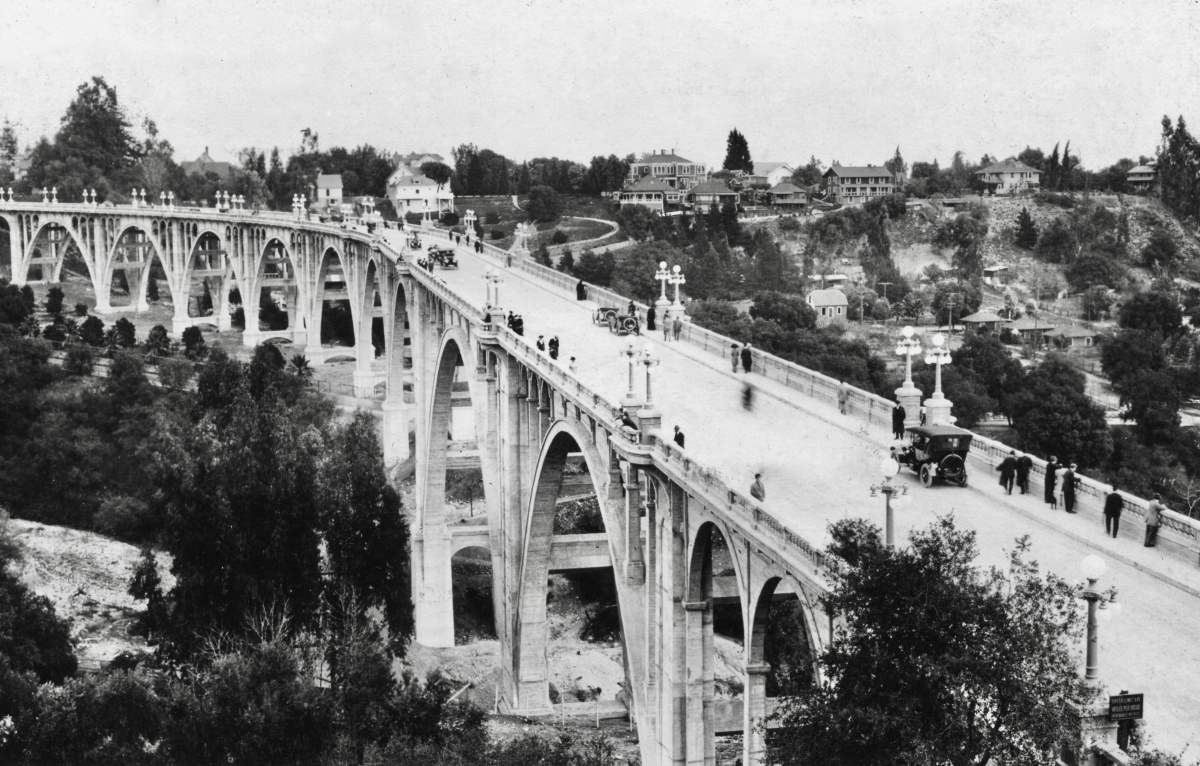
In 1913, completion of the Colorado Street Bridge made it the largest reinforced concrete bridge in the world. This engineering marvel rose 160 feet above the Arroyo Seco spanning 1,467 feet, making it the longest and highest bridge of any kind in the Southwest.
Note: Motorists were allowed to park along the full span of the bridge. However, the speed limit was only 10 mph.






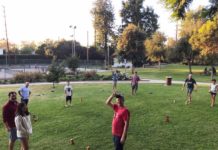








.png)










